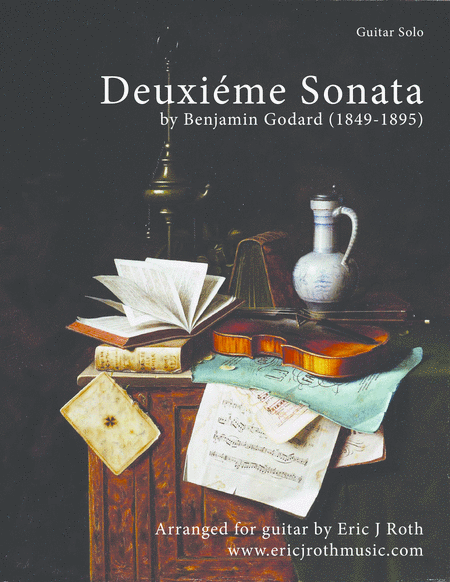Solo Guitar - Level 4 - Digital Download SKU: A0.914747 Composed by Benjamin Godard (1849-1895). Arranged by Eric J Roth. Romantic Period. Individual part. 14 pages. Eric J Roth #5867073. Published by Eric J Roth (A0.914747). Benjamin Godard (1849-1895) was a French violinist and composer of Jewish heritage. He wrote hundreds of works, including symphonies, operas, concertos, chamber and solo pieces, and songs. Today he is most remembered for his five symphonies and the Berceuse from his opera, Jocelyn. In style, Godard's music is reminiscent of the early Romantic period rather than the more grandiose style of Wagner. Godard wrote two sonatas for solo violin. The first dates from the 1870s. The second was composed in the 1890s and published after his death. Both sonatas contain four movements and employ baroque dance forms. The Deuxiéme (second) Sonata, arranged here for guitar solo, opens with a Sarabande in A minor, marked molto moderato e pompasamente (very moderately and pompously). The following Rigodon in C major is quick and convivial, although a contrasting section in C minor tempers the mood. The third movement, Adagio non ma troppo, begins in a tranquil F major. The texture soon thickens and makes striking use of the instrument’s lower register. A sudden modulation to F minor provides the sonata's most introspective moment. The piece returns to A minor and ends in a dramatic cliffhanger on the dominant. The rhythmic Bourrée serves as a true finale and includes a frenetic contrapuntal section recalling the violin sonatas of J. S. Bach.
